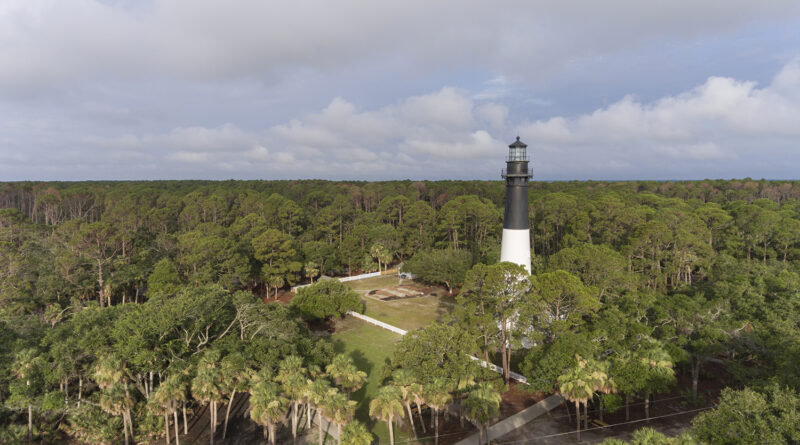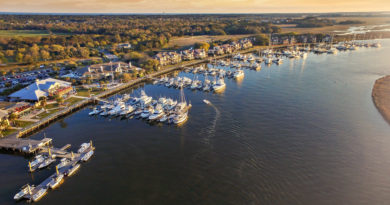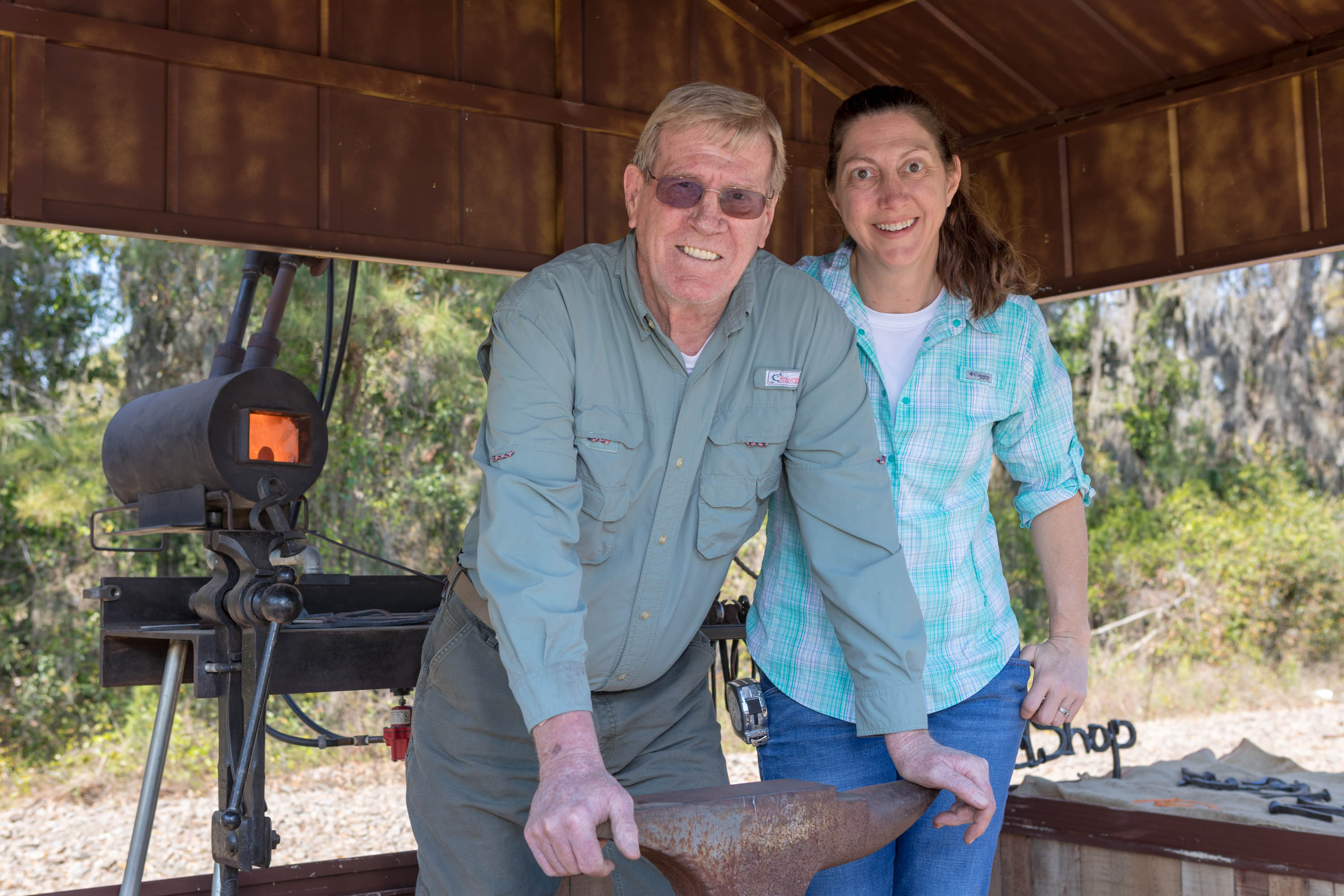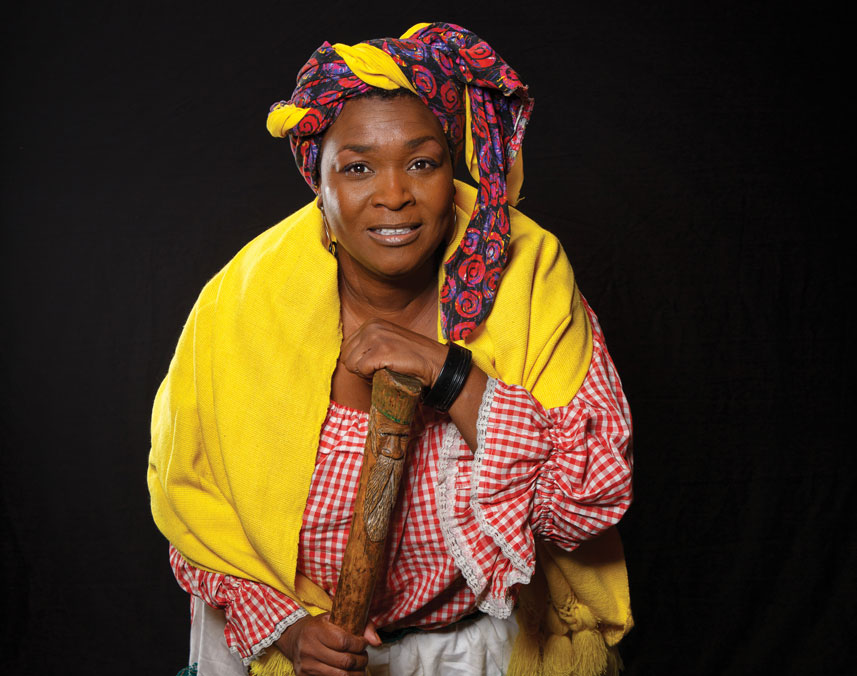The Hunting Island Lighthouse
Fresnel Lens Reassembly
story by KATE HAMILTON PARDEE
lighthouse photo by PAUL NURNBERG
photos courtesy of FRIENDS OF HUNTING ISLAND
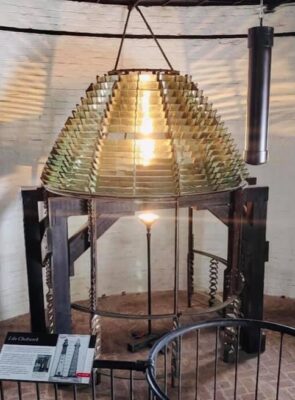
Hunting Island Lighthouse is in excellent technical and professional hands. Currently, amid a Fresnel light lens restoration, the dedicated team overseeing the project is committed to ensuring the history of this revered building will continue to live on. The group will include professional lampists — experts who work with lenses, repairing, rebuilding, disassembling, and installing — and those skilled in welding and metalwork. Along with very focused and determined Friends of Hunting Island (FOHI) Board Members, the Lighthouse and its history will be a treasure of historical information for all who visit its well-considered future site.
One of the FOHI Board’s goals is to plan the installations with displays to share the Fresnel lens’s storied and detailed history. The project has received support from the City and County of Beaufort and is seeking additional grant funding from the State Historic Preservation Office. This group of talented professionals is working as a team on this multifaceted project as they come together to coordinate, renovate, and fund this valuable piece of Beaufort history.
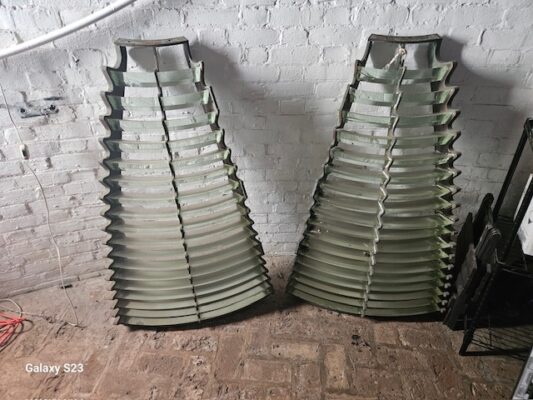
“Hunting Island is the second lighthouse built on the island,” explains Ted Panayotoff, a retired engineer from Sofia, Bulgaria, who has made Beaufort his home since 2016. Upon moving to Beaufort, he joined the FOHI Board and has had an active role in the Lighthouse structure. Given his professional background in lighthouse restoration, Panayotoff was able to offer his expertise to the project.
“I was concerned about the Hunting Island Lighthouse’s deteriorated condition, and expressed this in a report for the Board, which was sent to the Park Manager and forwarded to the South Carolina Parks, Recreation and Tourism Department (SCPRT),” he shares.
The firm Bennett Preservation Engineering was hired soon after by SCPRT, who planned the scope of work and contractor selection.
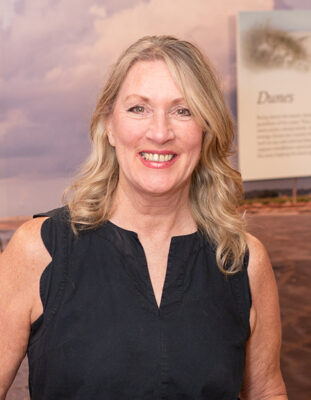
photo by CHARLOTTE BERKELEY
The South Carolina State Parks Director Paul McCormack asked Linda Miller, the president of FOHI, if the Board would like to be part of the restoration project. “After completing a much-anticipated renovation of the new Hunting Island Nature Building, I immediately said, ‘Yes,’” Miller replied.
The project is a complicated and lengthy process with considerable costs attached. Linda Miller explains, “The FOHI Board has submitted grant proposals to the City of Beaufort and the state for our financial obligations,” she continues. “Hunting Island is the number one tourist attraction in Beaufort, and the Lighthouse is the number one site to visit at the Park. We both need and appreciate the support. Over the last 150 years, this Lighthouse has seen a lot but remains a fan favorite,” she says smiling, “Friends of Hunting Island support this too, but we welcome other contributions.”
While the organization of the endeavor is ongoing, the technical work supporting the Fresnel lens is critical. The lens was created in the early part of the 19th century by French physicist Augustine Fresnel. The Hunting Island Lighthouse has housed its lens for sixty-one years. The restoration is significant as Hunting Island Lighthouse holds one of only 39 Fresnel First Order Lenses in the United States.
This situation was not lost on Ted Panayotoff, who brought in Jim Woodward, a renowned Fresnel lens expert and lampist from Green Valley, Arizona, as one of the team’s first members. Woodward, now retired from the Coast Guard after 40 years, began as an enlisted draftsman.
While he didn’t particularly like the sea, he did like drafting and later pursued a career working with lampist Arthur Mienholt. Mienholt currently works with the US Lighthouse, Ninth District Office in Cleveland. After training with Mienholt, Woodward continued in civil engineering and then transitioned to environmental compliance.
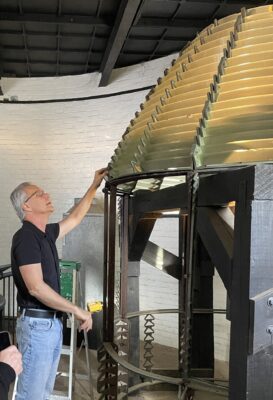
Jim Woodward was first introduced to Fresnel lenses in 1965, where he learned the basics of their assembly and maintenance. Since then, he has gained great technical expertise in classical lenses, later continuing his career by establishing The Lighthouse Consultant LLC. “I’m in my fifty-eighth year working with lenses. I stopped counting my lens projects at three hundred. I worked from every state with lighthouses, including Bermuda, Belgium, Puerto Rico, and the Falkland Islands,” Woodward says. “And I love almost every lighthouse I have ever visited.”
When Theodore Panayotoff contacted him in July 2022 with his concerns about the poor condition of the Hunting Island Lighthouse lens, it became clear to Woodward that professional help was crucial. Once hired, Woodward brought in other industry professionals, including Thomas Joseph Cumella from Mendham, New Jersey, who immediately recognized the importance of their work. “The biggest challenge is the assembly and disassembly of these classical lenses. These lenses range from 100 years to 150 years old. The glass prisms are very fragile, and some case components can weigh over 100 pounds.” Asked what the most significant challenge with Hunting Island Lighthouse lens is, Cumella says, “The Fresnel lens was found to be in rough shape, having been exposed to 60 or so years of a harsh uncontrolled environment and suspected vandalism. Although restoring this lens was labor intensive and tedious, we got it done and stored.”
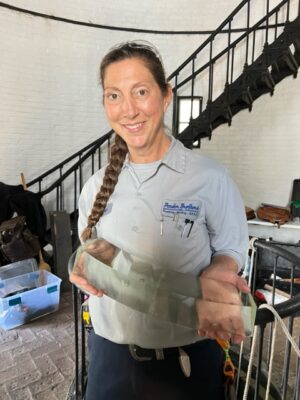
After Woodward and Cumella disassembled the lens entirely in November, it is only one of the goals of this multifaceted project. Woodward explains, “There are new frame members to be fabricated to replace those lost to deterioration. Skilled metal workers must straighten out the warped lens frame members.” That is where local welder Cathy Pender Emmert from Pender Brothers in Port Royal, SC, comes in.
Originally from Barnwell, SC, Emmert began working at her family’s plumbing business when she was 15. Although she never took any welding classes, her training was hands-on in the shop. She and her younger sister, Jennifer Pender Petersen, worked hard in a very male-oriented business, but Emmert proudly laughs, “I don’t wear steel-toed boots and a tape measure for nothing.“
Pender Brothers has been hired to replace all the steel parts with 316 alloy stainless steel. “We will be straightening any brass/bronze parts bent by decay or rust, and reassembling everything in the new building to house it on display for the public for years to come,” Emmert shares.
This project is especially important to Emmert due to her long history with the area. “When I was a kid, my parents took my sister and me to Hunting, and we would race up the many steps to the top.” These visits have continued as she now shares her many fond memories with her own children.
As the project continues, a new display area will be identified that will provide visitors with a viewing location, providing detailed information while ensuring the lens’s safety. Woodward explains that the lens will need a complete restoration to make the original pieces as close to factory new as possible. FOHI Board President Linda Miller’s goal is to secure a location on the lighthouse complex where an ADA handicap-accessible exhibit space will be built to house the newly rebuilt and restored lens.
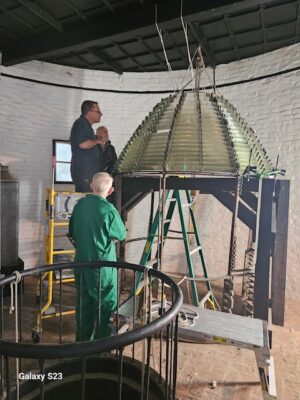
Each team member’s connection to the project is evident during every conversation.
For Theodore Panayotoff, FOHI member, engineer, and lighthouse consultant, the structure of the building is crucial, for it is also the history of the lighthouse keepers, such as Theodore Gaillard. “After 31 years, it’s still a private aid to navigation authorized by the Coast Guard, Panayotoff states, “The new building and planned exhibits will highlight the Light Station’s historic complex.”
For James Woodward, this desired outcome is a continuing process. “The next phase for me? If I’m lucky enough to be selected to return to the site, we’ll install a new framework and the lens in a new display location, providing information and illustrations.” Woodward continues, “We’ll still follow the steps and procedures that lampists followed two hundred years ago. It’s a living history.” For his coworker Tom Cumella, it is a fascinating continuation of the learning process on a fantastic project. “I’m a recently retired electrician. I worked in all five boroughs of New York City.” Now working for The Lighthouse Consultants Cumella says, “I’ll have more time to learn from the best.”
For Cathy Pender Emmert, the project has allowed her to work on something Pender Brothers hasn’t done before, “It makes it so exciting for us, being a part of Beaufort and Hunting Island’s history.”
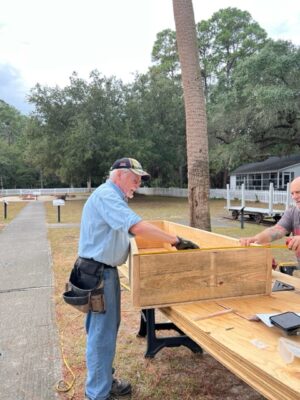
creating crates for storage
FOHI President Linda Miller has a tireless commitment to the project. Currently detailing the work on the Lighthouse, she’s compiling historical photos and stories of the Lighthouse for inclusion in a book she’s planning about the Lighthouse. “The reassembly project will be open to the public in late 2024,” Miller says, “The lighthouse will continue to live its best life on the shores of Hunting Island during a much-needed rejuvenation.”
Provided all remains on schedule, people from near and far will soon learn about the 1875 Fresnel Lens Restoration Project’s storied history. In the meantime, Ted Panayotoff says, “Hunting Island Lighthouse will still stand as a private aid to navigation on current nautical charts and an aid to navigation lists.” Additionally, the light has been replaced by a VLB-44, a battery-powered LED-based unit controlled by a computer.
The future is bright for the lighthouse project, shining as a beacon to the future as it acknowledges a rich past. Visitors will again climb the one hundred and sixty-seven steps leading to the top. Until then, Hunting Island Lighthouse will continue its famous 4.5-second flash every 30 seconds. As Panayotoff reminds us, “It is and will continue to be a real working lighthouse.”

